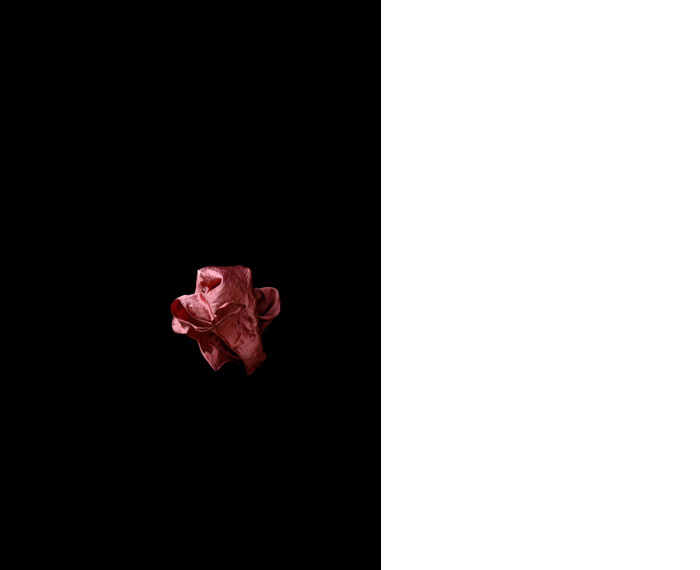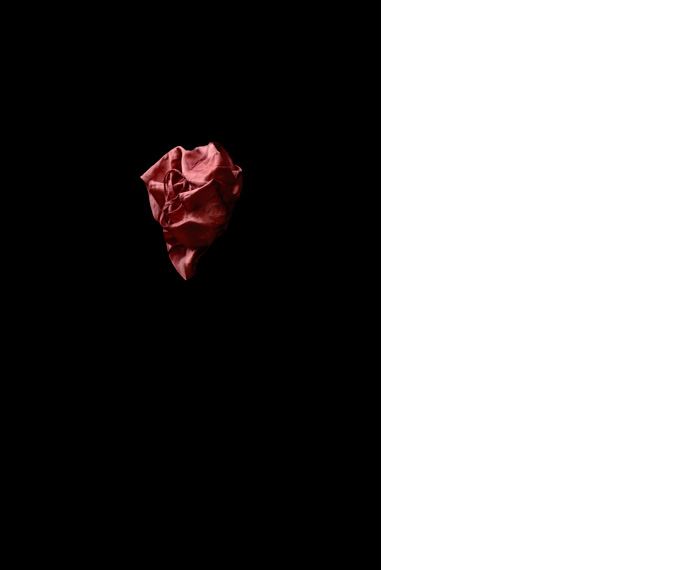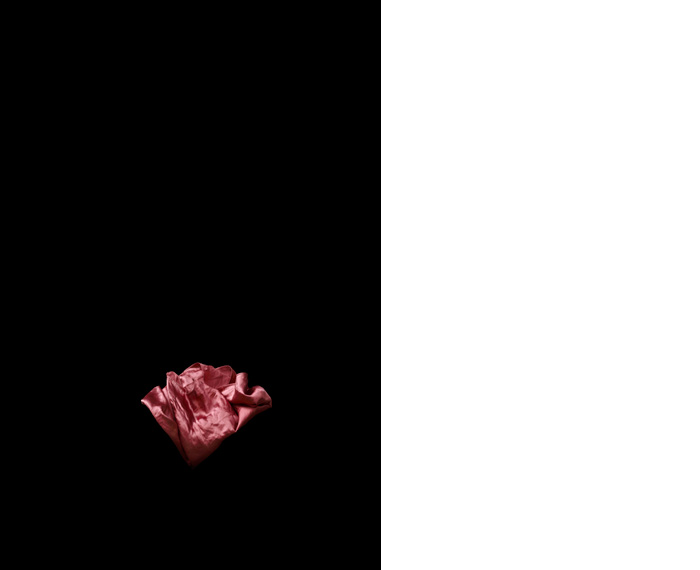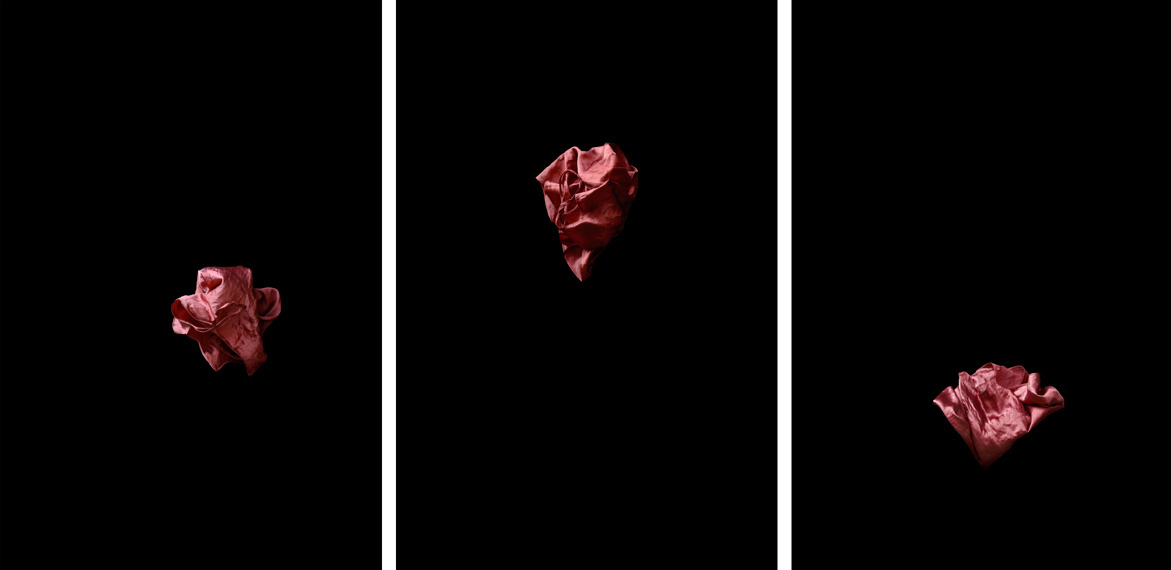Clothes are thrown into the picture, the camera films their short flight. Then the shutter clicks, a selected moment is locked and saved, while in the meantime the garment has long since fallen to the ground. Ever new garments fly and freeze, each film sequence ends in a freeze frame, culminating, so to speak, in the "decisive moment" when the malleable textiles are cast into a final shape. Moving bodies cross the resting image spaces, which become catching devices¹ for the projectiles before they reach the end point of their trajectory.
A voice from offstage accompanies the flight of the blouses and skirts in the former London textile district and reflects the On the Process of Shaping an Idea into Form through Mental Modelling: the relationship between photography and film, the moment as opposed to the duration, and the act of transformation between calculation and "unknown knowns" (Slavoj Žižek). For this is how the textile sculptures in the photographs are contoured, as many factors as acceleration, air resistance, gravity, etc. influenced their form. In this process, Sissa Micheli sees a parallel to the materialization of artistic ideas: "I have a mental model but I do not know what the final picture will look like," she says offstage.
The game at the border between photo graphics and film inevitably suggests a competitive relationship between the two media. The idea that every photograph is ultimately preceded by a "film" is obvious, and similar to James Williamson's short film "The Big Swallow", published in 1901, one medium is lightheartedly played off against the other.
— Ruth Horak
[1] Gilles Deleuze, Das Bewegungs-Bild, Kino 1, Frankfurt am Main, 1997. S. 28
[2] Slavoj Zizek
 ON THE PROCESS OF SHAPING AN IDEA INTO FORM THROUGH
ON THE PROCESS OF SHAPING AN IDEA INTO FORM THROUGH
MENTAL MODELLING
2020
Archivfester Pigmentdruck auf Fine Art Baryta
 ON THE PROCESS OF SHAPING AN IDEA INTO FORM THROUGH
ON THE PROCESS OF SHAPING AN IDEA INTO FORM THROUGH
MENTAL MODELLING
2020
Archivfester Pigmentdruck auf Fine Art Baryta
90x60cm
 ON THE PROCESS OF SHAPING AN IDEA INTO FORM THROUGH
ON THE PROCESS OF SHAPING AN IDEA INTO FORM THROUGH
MENTAL MODELLING
2020
Archivfester Pigmentdruck auf Fine Art Baryta
90x60cm
 ON THE PROCESS OF SHAPING AN IDEA INTO FORM THROUGH
ON THE PROCESS OF SHAPING AN IDEA INTO FORM THROUGH
MENTAL MODELLING
2020
Archivfester Pigmentdruck auf Fine Art Baryta
90x60cm